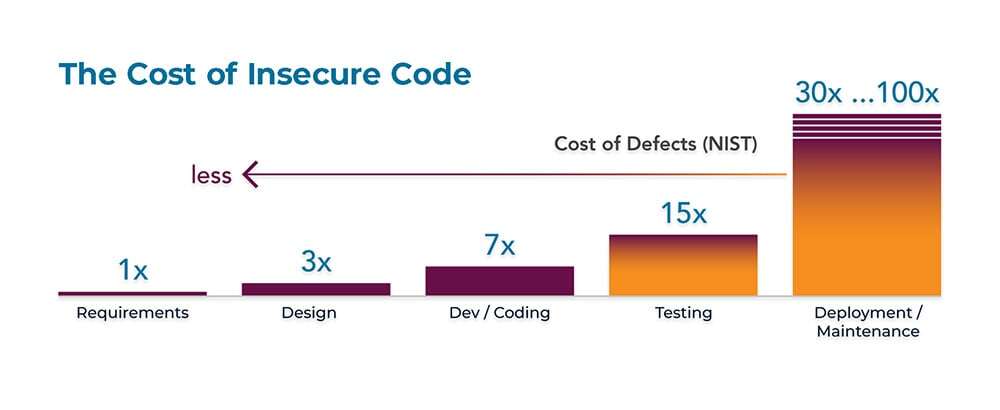In today’s software-driven world, security cannot be a siloed responsibility. With attackers exploiting every stage of the software development lifecycle (SDLC), a single weak link, whether it’s a design oversight, an insecure configuration, or a missed test can compromise your product, your customers, and your business.
To build truly secure software, all stakeholders involved in the SDLC must speak the same security language.
Security Is Everyone’s Responsibility
From product design and development to deployment and maintenance, security risks can surface anywhere in the lifecycle. Yet, many organizations still concentrate security efforts at the tail end of the process, often leaving developers, testers, DevOps, and architects without the knowledge they need to prevent issues early on.
According to GitLab, 50% of security professionals reported that developers failed to identify 75% of known vulnerabilities in their codebases. The takeaway? Reactive security isn’t enough. Proactive, role-based training must become part of the development process.
Fix Early, Save Exponentially
Another reason to shift security left? Fixes cost less the earlier they are detected. According to the National Institute of Standards and Technology (NIST), vulnerabilities cost more the later they are found, up to 100x more if they slip through testing and have to be remediated in production. When you consider the economic impact, implementing security training across the SDLC just makes sense.

Shift Security Left —and Stay Ahead
A shift-left strategy integrates security from the beginning, when it’s faster, cheaper, and more efficient to fix vulnerabilities. Identifying flaws in design or code, before they move downstream, improves overall product quality, accelerates release cycles, and minimizes technical debt. But shifting left is more than a process change—it requires a cultural shift. That means levelling your playing field by upskilling everyone across your SDLC, from developers and engineers to analysts and system administrators. Gaps in security knowledge across these roles are a liability that places an extra burden on your developers and testers.

Train to Standards That Matter
CMD+CTRL training is designed around globally recognized security frameworks that your teams should already be following:
- OWASP Top 10 – The most critical web, mobile, and AI security risks every developer should know.
- CWE and MITRE ATT&CK – Foundational databases of software flaws and adversary techniques.
- NIST Cybersecurity Framework – Comprehensive guidance to secure systems from design to deployment.
These aren’t theoretical checkboxes. They’re actionable, practical standards your team can apply every day, especially if they’re backed by training that reinforces secure behavior with role-based learning.
Build Secure Habits Across the Lifecycle
Security training should match how your team works. That means hands-on learning for real-world roles—not cookie-cutter slide decks or abstract theory.
CMD+CTRL training is role-based, modular, and practical. With over 250 courses and 150+ hands-on labs, we cover the full spectrum of secure development topics:
- Modern languages, frameworks, platforms, and DevOps tools
- Secure architecture, design, development, and testing practices
- Low-code, mobile, serverless, API, and GenAI risk mitigation
- Courses aligned to OWASP, ASVS, NIST, and more
Learning paths are tailored by role, whether you’re training a front-end developer, a QA engineer, a DevOps lead, or a system architect. And our Cyber Ranges provide ultra-realistic application, service and cloud environments where teams can safely explore live threat scenarios and practice offensive and defensive techniques with challenge levels ranging from basic to elite.
Eliminate Gaps. Strengthen Your Chain.
Security threats don’t target just one part of your pipeline. They target the gaps between tools, between teams, and especially between skill sets. Investing in software security training across the SDLC ensures:
- Faster time-to-market with fewer delays from late-stage vulnerabilities
- Lower remediation costs by catching issues early
- Improved collaboration between development, QA, DevOps, and security
- Greater assurance of compliance with industry and regulatory standards
Our progressive learning journeys make implementation seamless. We can assess your team’s current skill levels, recommend the right courses by role or tech stack, and help you measure and improve over time.
Start Building a Security-First Development Culture
Software security is not a one-and-done checkbox. It’s a shared responsibility that must be embedded in every phase of development. With CMD+CTRL, your teams can build secure habits, reduce risk, and deliver software that stands up to modern threats.
Explore our Course Catalog, check out our Cyber Ranges, or get in touch to see how we can help you future-proof your SDLC.